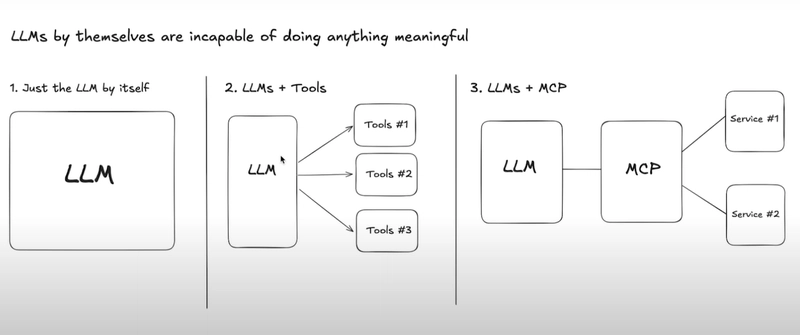Automating Incident Response – CISO’s Efficiency Guide
In today’s data-driven world, Chief Information Security Officers (CISOs) face unprecedented challenges managing cybersecurity operations. The volume of data requiring protection continues to expand exponentially, while new compliance requirements like SEC breach reporting rules demand faster response times than ever before. Manual processes cannot scale to meet these demands, creating a critical efficiency gap in […] The post Automating Incident Response – CISO’s Efficiency Guide appeared first on Cyber Security News.

In today’s data-driven world, Chief Information Security Officers (CISOs) face unprecedented challenges managing cybersecurity operations.
The volume of data requiring protection continues to expand exponentially, while new compliance requirements like SEC breach reporting rules demand faster response times than ever before.
Manual processes cannot scale to meet these demands, creating a critical efficiency gap in modern security programs. As threat landscapes grow increasingly complex, automation emerges as a technological solution and a strategic imperative.
For technical leaders, implementing effective incident response automation represents an opportunity to transform security operations, dramatically reduce mean time to resolution (MTTR), and enable teams to focus on high-value activities rather than repetitive tasks.
This guide explores how technical leadership can leverage automation to revolutionize incident response processes and drive cybersecurity efficiency.
The Technical Leadership Dimension of Security Automation
Technical leadership in cybersecurity represents a powerful fusion of technological expertise and people management capabilities.
Effective security automation requires leaders who understand the technical intricacies of security operations and the strategic business objectives their programs support.
These leaders must bridge the gap between technical possibilities and operational realities, translating complex automation concepts into practical implementations that deliver measurable value.
They serve as visionaries who can identify which processes benefit most from automation while recognizing where human judgment remains essential.
Beyond technical knowledge, these leaders must excel at change management. They must guide their teams through the transition from manual processes to automated workflows while addressing concerns about job displacement or skill obsolescence.
By combining technical credibility with emotional intelligence, security leaders can overcome resistance to automation initiatives and foster cultures where technology enhances rather than replaces human expertise.
This wholehearted leadership approach ensures automation becomes a foundation for security resilience rather than merely another tool in an already complex technology stack.
Essential Components of Incident Response Automation
Building an effective automated incident response capability requires understanding the core components that deliver maximum efficiency gains. Technical leaders should focus on these key elements when designing their automation strategy:
- Automated detection and alert generation: Monitoring tools continuously scan systems for security anomalies and potential breaches, automatically generating alerts and routing them to appropriate team members based on predefined criteria and severity thresholds.
- Intelligent classification and prioritization: Automation systems prioritize incidents based on threat intelligence, affected assets, and business impact, ensuring critical issues receive immediate attention while less urgent matters are appropriately queued.
- Streamlined data collection and diagnostics: Automated scripts pull relevant information from affected systems, performing initial triage and gathering essential intelligence without manual intervention, accelerating the investigation process.
- Orchestrated workflow management: Automation tools create incident tickets, assign appropriate teams, and coordinate workflows across security functions, eliminating manual handoffs that typically slow response times.
- Comprehensive documentation and reporting: Automated systems collect and compile incident data throughout the response process, supporting real-time situational awareness and post-incident analysis while streamlining compliance reporting requirements.
Successful implementation requires a strategic approach rather than attempting to automate everything simultaneously. Technical leaders should identify high-value, repetitive processes as initial candidates for automation while maintaining human oversight for critical decisions.
This measured approach delivers immediate efficiency gains while building toward more sophisticated capabilities. The true power of automation emerges when these components work together as an integrated system rather than isolated tools.
This holistic approach enables security teams to handle larger incident volumes with greater consistency and reduced response times. It also allows skilled analysts to focus their expertise on complex threats requiring human judgment.
Leading Through the Implementation Journey
Successfully implementing incident response automation requires more than selecting the right tools—it requires leadership that addresses both technical requirements and organizational dynamics.
The implementation journey challenges technical leaders to balance technological capabilities with team development and organizational readiness, creating sustainable change rather than merely deploying new tools.
Effective implementation begins with clearly articulating how automation serves broader security objectives.
Rather than positioning automation as a replacement for human expertise, successful leaders frame it as an enhancement that eliminates drudgery and amplifies team capabilities.
This narrative shift proves crucial for building buy-in across the organization, particularly among security practitioners who may fear job displacement.
Technical leaders must collaborate closely with their teams to identify painful aspects of current processes, ensuring automation addresses genuine needs rather than creating additional complexity.
Implementation requires patience and persistence, as security automation rarely delivers its full potential immediately.
Leaders must manage expectations while maintaining momentum through incremental wins, starting with well-defined use cases that deliver visible benefits before expanding based on lessons learned.
Knowledge sharing becomes essential for building institutional confidence in automated workflows throughout this process.
Creating formal feedback mechanisms allows team members to report automation shortcomings and suggest improvements, fostering a culture of continuous refinement.
Training deserves particular attention, as team members need technical skills to interact with automation tools and conceptual understanding of how automation transforms their roles.
Rather than teaching button-pushing procedures, effective leaders ensure their teams understand the strategic purpose behind automation and how it enhances their professional value. This deeper understanding promotes creative applications beyond the initially designed purposes.
- Establish clear metrics for success: Develop and track quantifiable indicators that demonstrate automation’s impact on response times, analyst workload, and security outcomes, enabling data-driven refinement of automation strategies.
- Build a security automation center of excellence: Create a dedicated team responsible for developing automation use cases, evaluating tools, and sharing best practices across the organization, accelerating adoption, and ensuring consistent implementation approaches.
The most successful automation initiatives ultimately transform security processes and culture.
By approaching automation with a wholehearted commitment to technological excellence and team development, technical leaders create security operations that are simultaneously more efficient and more rewarding for practitioners. This establishes a foundation for long-term security resilience in an increasingly challenging threat landscape.
Find this News Interesting! Follow us on Google News, LinkedIn, & X to Get Instant Updates!
The post Automating Incident Response – CISO’s Efficiency Guide appeared first on Cyber Security News.





































































































































































![[The AI Show Episode 145]: OpenAI Releases o3 and o4-mini, AI Is Causing “Quiet Layoffs,” Executive Order on Youth AI Education & GPT-4o’s Controversial Update](https://www.marketingaiinstitute.com/hubfs/ep%20145%20cover.png)





























































































































![[DEALS] Mail Backup X Individual Edition: Lifetime Subscription (72% off) & Other Deals Up To 98% Off – Offers End Soon!](https://www.javacodegeeks.com/wp-content/uploads/2012/12/jcg-logo.jpg)











































































































































_Andreas_Prott_Alamy.jpg?width=1280&auto=webp&quality=80&disable=upscale#)
































































































![Severance-inspired keyboard could cost up to $699 – have your say [Video]](https://i0.wp.com/9to5mac.com/wp-content/uploads/sites/6/2025/05/Severance-inspired-keyboard-could-cost-up-to-699-%E2%80%93-have-your-say-Video.jpg?resize=1200%2C628&quality=82&strip=all&ssl=1)




![Google Home app fixes bug that repeatedly asked to ‘Set up Nest Cam features’ for Nest Hub Max [U]](https://i0.wp.com/9to5google.com/wp-content/uploads/sites/4/2022/08/youtube-premium-music-nest-hub-max.jpg?resize=1200%2C628&quality=82&strip=all&ssl=1)



















































































































